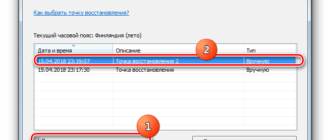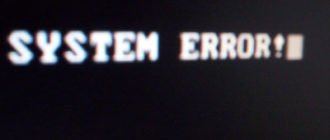Как и в любой другой программе в Steam случаются сбои. Одним из частых видов неполадок является проблемы с запуском игры. Эта проблема обозначена кодом 80. При возникновении данной неполадки вы не сможете запустить нужную игру. Читайте далее, чтобы узнать, что делать при возникновении ошибки с кодом 80 в Steam.
Поврежденные файлы игры и проверка кэша
Возможно все дело в том, что были повреждены игровые файлы. Такое повреждение может быть вызвано в том случае, когда была резко прервана установка игры либо были повреждены сектора на жестком диске. Вам поможет проверка целостности кэша игры. Для этого необходимо кликнуть правой клавишей мыши по нужной игре в библиотеке игр Steam. Затем выберите пункт свойства.
После этого вам необходимо перейти на вкладку «локальные файлы». На этой вкладке есть кнопка «проверить целостность кэша». Нажмите ее.
Начнется проверка игровых файлов. Ее продолжительность зависит от размера игры и скорости вашего жесткого диска. В среднем проверка занимает около 5-10 минут. После того как Steam выполнит проверку, он автоматически заменит все поврежденные файлы на новые. Если в ходе проверки повреждений не было обнаружено, то вероятнее всего проблема в другом.
Зависший процесс игры
Если до возникновения проблемы игра зависла или вылетела с ошибкой, то есть вероятность того, что процесс игры так и остался незакрытым. В этом случае вам нужно в принудительном порядке завершить процесс игры. Делается это с помощью диспетчера задач Windows. Нажмите сочетание клавиш CTRL+ALT+DELETE. Если вам предложат выбор из нескольких вариантов, выберите диспетчер задач. В окне диспетчера задач вам необходимо найти процесс игры.
Обычно он имеет такое же имя как игра либо очень похожее. Также вы сможете найти процесс по иконке приложения. После того как вы найдете процесс, кликните по нему правой клавишей мыши и выберите пункт «снять задачу».
Затем попробуйте запустить игру еще раз. Если проделанные действия не помогли, то переходите к следующему способу решения проблемы.
Проблемы с клиентом Стима
Данная причина встречается довольно редко, но имеет место быть. Клиент Steam может препятствовать нормальному запуску игры в том случае, если он работает некорректно. Для того чтобы восстановить работоспособность Стима, попробуйте удалить конфигурационные файлы. Они могут быть повреждены, что приводит к тому, что вы не можете запустить игру. Данные файлы находятся в папке, в которую был установлен клиент Steam. Для ее открытия кликните правой клавишей мыши по ярлыку запуска Стима и выберите вариант «расположение файла».
Вам нужны следующие файлы:
Удалите их, перезапустите Steam, а затем попробуйте запустить игру еще раз. Если это не помогло, то придется переустанавливать Steam. О том, как выполнить переустановку Стима, оставив при этом установленные в нем игры, вы можете прочитать здесь. После того как вы проделаете данные действия, попробуйте запустить игру еще раз. Если это не помогает, остается только обратиться в службу поддержки Steam. О том, как обратиться в техподдержку Стима, вы можете прочитать в этой статье.
Теперь вы знаете, что делать при возникновении ошибки с кодом 80 в Steam. Если вы знаете другие способы решения данной проблемы, то напишите об этом в комментариях.
Мы рады, что смогли помочь Вам в решении проблемы.
Помимо этой статьи, на сайте еще 11805 инструкций.
Добавьте сайт Lumpics. ru в закладки (CTRL+D) и мы точно еще пригодимся вам.
Отблагодарите автора, поделитесь статьей в социальных сетях.
Опишите, что у вас не получилось. Наши специалисты постараются ответить максимально быстро.
How to Fix SChannel Error 36887 (Fatal Alert 42)?
A lot of Windows users are reporting that they’re suddenly encountering a lot of different Schannel Error entries inside Event Viewer with the 36887 ID. The error message accompanied by the error code is ‘A fatal alert was received from a remote endpoint. Fatal Alert 42’.
 Schannel Error Code 36887
Schannel Error Code 36887
SChannel is essentially a set of security protocols that facilitate the implementation of encrypted identity authentication and secure communications between the involved parties.
As it turns out, several different causes might end up triggering the SChannel Error 36887:
- Missing EventLogging value in Registry – You might end up seeing this error because your system doesn’t have a dedicated registry key where it can dump events of this kind. To fix this issue in this car, you’ll need to create the EventLogging value manually via Registry Editor.
- TLS 1.0 was disabled by KB3161606 update – As it turns out, there is one particular update (KB3161606) that might end up producing these kinds of event errors since it effectively disables TLS 1.0. If you are still using applications that make use of this technology, you should be able to fix the issue by uninstalling the patch and blocking its installation.
- 3rd party AV interference – If you’re using ESET Antivirus, chances are you’re seeing this error because this 3rd party suite is effectively blocking any attempt at using TLS 1.0 Encryption. The only way to fix the problem is to uninstall the 3rd party AV suite and go for a different 3rd party suite.
- System file corruption – As it turns out, system file corruption can also be responsible for the apparition of this particular error message. If corruption among your system file is responsible for the error, you can fix the problem by running SFC or DISM scans to replace any damage instances with healthy copies.
- TLS Options are being used by IE – Another reason that might ultimately spawn this error is an instance where Internet Explorer or Microsoft Edge is permitted to run old TLS Encryptions. In this case, you can make the event views stop by disabling TLS options via the Internet Options menu.
- CCleaner v5.06 is interfering with TLS files – As it turns out, there is one file known for its interference with the core component of TLS encryption. In this case, you will need to uninstall the current CCleaner version before reinstalling the latest version to fix the problem.
Creating the EventLogging Registry key
As it turns out, the SChannel Error 36887 (Fatal Alert 42) can occur because your system doesn’t have a dedicated registry key where it can dump events of this kind.
If this scenario is applicable, you should be able to fix this issue by using Registry Editor to create the EventLogging key inside SecurityProviders/Schannel. This operation was confirmed to be successful by a lot of affected users that were encountering this issue on Windows Server versions.
Here’s a quick step by step guide on applying this fix on every recent Windows server version:
- Press Windows key + R to open up a Run dialog box. Next, type ‘regedit’ and press Enter to open up the Registry Editor. When prompted by the UAC (User Account Control), click Yes to grant administrative privileges.
Opening the Registry Editor
- Once you’re inside the utility, use the left-hand menu to navigate to the following location:
In case you’re still encountering constant SChannel Error 36887 Event Viewer entries with the same error or this scenario was not applicable, move down to the next potential fix below.
Uninstall Microsoft Windows Patch (KB3161606)
As it turns out, one of the most common causes that will end up causing the Schannel 36887 error is a Microsoft Windows update patch KB3161606 that ends up disabling TLS 1.0. This technology is a now-deprecated predecessor to Secure Sockets Layer (SSL), but some applications might still use it.
Depending on the applications that you use, there are a lot of applications that might be affected by this – basically, any product that requires TLS 1.0 to maintain the full functionality of the product.
If you find yourself in this scenario and you’re looking for a way to revert to the old behavior and re-enable TLS 1.0, you will need to revert the update that made this machine change.
To do this, you will need to revert the KB3161606 Windows Update and prevent it from ever being installed on your machine again. Here’s a quick step by step guide on doing so:
Note: These steps will assume that the problematic update only got installed recently, and you have a viable System Restore point to work with.
- Open up a Run dialog box by pressing Windows key + R. Next, type ‘rstrui’ inside the text box and press Enter to open up the System Restore utility.
Opening the System Restore wizard via Run box
- Once you’re inside the System Restore utility, click on Next at the very first prompt, then check the box next to Show more restore points to see a full list of available system restore points.
- After you do this, select a restore snapshot that is dated right before the problematic Windows Update was installed and you started seeing frequent Schannel 36887 Errors.
In case this method is not applicable or you followed the instructions and you still get the same constant SChannel Error 36887 in Event viewer, move down to the next potential fix below.
Uninstalling ESET Antivirus
As it turns out, ESET Antivirus Endpoint protection is not a big fan of the now deprecated TLS 1.0 Encryption. If you have any programs that still use this old technology, you will need to uninstall ESET to fix the issue (disabling the real-time protection will not work since this block is enforced at a firewall level.
Some users that were also dealing with persistent Event viewers related to Shannel have confirmed that no new errors of this kind were ever reported once they’ve removed the AV from their system.
This is not the most elegant solution, but it’s a quick fix in case you can afford to switch over to Windows Defender or another 3rd party equivalent. Here’s a quick guide on uninstalling Eset Antivirus:
- Press Windows key + R to open up a Run dialog box. Next, type ‘appwiz. cpl’ and press Enter to open up the Programs and Features window.
 Typing in “appwiz. cpl” in the Run prompt
Typing in “appwiz. cpl” in the Run prompt - Once you’re inside the Programs and Features menu, scroll down through the list of installed applications and locate the entry associated with Eset antivirus.
- When you see it, right-click on it and choose Uninstall from the context menu to begin the installation process.
Uninstalling ESET antivirus
- At the uninstallation screen, follow the on-screen instructions to complete the process, then restart your computer and see if the problem is fixed at the next startup sequence.
In case you’re still seeing frequent SChannel Error 36887 entries in Event viewer, move down to the next potential fix below.
Running SFC and DISM scans
Under certain circumstances, you can expect to see this error due to some type of system file corruption that ends up affecting your machine ability to handle TSL encryption. In this case, you will need to run a couple of utilities equipped to find and fix instances of corrupted system files.
Fortunately, every recent Windows version is equipped with two built-in tools capable of helping you do this: System File Checker (SFC) and Deployment and Image Servicing and Deployment (DISM).
Both utilities will ultimately help you clean your system for system file corruption, but they operate differently – DISM relies on a Windows Update subcomponent to download healthy copies for the files that need to be replaced while SFC retrieves healthy files from an archive that is stored locally.
Our recommendation is to run both utilities in quick succession to improve your chances of fixing the issue. Start with a simple SFC scan and once the operation is complete, restart your computer and start a DISM scan.

Note: Keep in mind that before running DISM, you will need to ensure that your Internet connection is stable.
After both scans have been successfully performed, reboot your computer and see if you’re still seeing the same constant SChannel Error 36887 (Fatal Alert 42) errors in Event viewer.
In case the same problem is still occurring, move down to the next method below.
Disabling the use of TLS Options
In case you notice that these Schannel errors are somehow triggered by your web surfing (whenever you visit certain websites), it’s very likely that the error gets triggered when you visit sites that don’t use TLS encryption.
In this case, you can ensure that the same errors aren’t thrown ever again by this scenario by disabling the Use TLS option inside your Internet Options menu. This is not ideal since it might leave your system vulnerable to certain browser hijackers, but it serves as a reliable temporary fix.
Here’s a quick guide on disabling the use of TLS Options via the Internet Options menu:
- Press Windows key + R to open up a Run dialog box. Next, type ‘intetcpl. cpl’ inside the text box and press Enter to open up the Internet Options screen.
Opening the Internet Properties screen
- Once you’re inside the Internet Properties screen, click on the Advanced tab and then scroll down to the Security entry inside the Settings menu.
- Next, uncheck every box that starts with Use TLS and click Apply to save the changes.
Disabling the use of TLS from Internet Properties
- After you save the changes, restart your machine and see if the problem is fixed at the next computer startup.
In case you’re still stuck with the same SChannel Error 36887 (Fatal Alert 42) error, move down to the next potential fix below.
Installing the Latest version of CCleaner (if applicable)
As it turns out, this problem can also be caused by an older version of a 3rd party cleaning app called CCleaner from Piriform. This particular problem is only reported to occur with version 5.06.
If this scenario is applicable and you have CCleaner installed on your computer, you should be able to fix the issue by uninstalling the current CCleaner version and then reinstalling the latest. This operation was confirmed to work by several affected users that we’re encountering the SChannel Error 36887 (Fatal Alert 42) error.
If this applies to you too, follow the instructions below to uninstall current CCleaner and reinstall the latest version:
- Press Windows key + R to open up a Run dialog box. Next, type ‘appwiz. cpl’ and press Enter to open up the Programs and Files menu.
 Type appwiz. cpl and Press Enter to Open Installed Programs List
Type appwiz. cpl and Press Enter to Open Installed Programs List - Once you’re inside the Programs and Features menu, scroll down through the list of installed programs and locate CCleaner. When you see it, right-click on it and choose Uninstall from the newly appeared context menu.
Uninstalling CCleaner
- Next, follow the on-screen instructions to complete the uninstallation, then restart your computer.
- At the next computer startup, visit this link (here) and wait for the download to complete.
Downloading CCleaner
- Once the download is complete, open the installation executable that you just downloaded and follow the on-screen prompts to complete the installation of the newest version>
Installing CCleaner
- After installing the newest version, reboot your computer and see if you spot any new instances of the SChannel Error 36887 inside Event Viewer after the next startup is complete.
https://lumpics. ru/steam-error-code-80/
https://appuals. com/schannel-error-36887/
 Typing in “appwiz. cpl” in the Run prompt
Typing in “appwiz. cpl” in the Run prompt Type appwiz. cpl and Press Enter to Open Installed Programs List
Type appwiz. cpl and Press Enter to Open Installed Programs List

